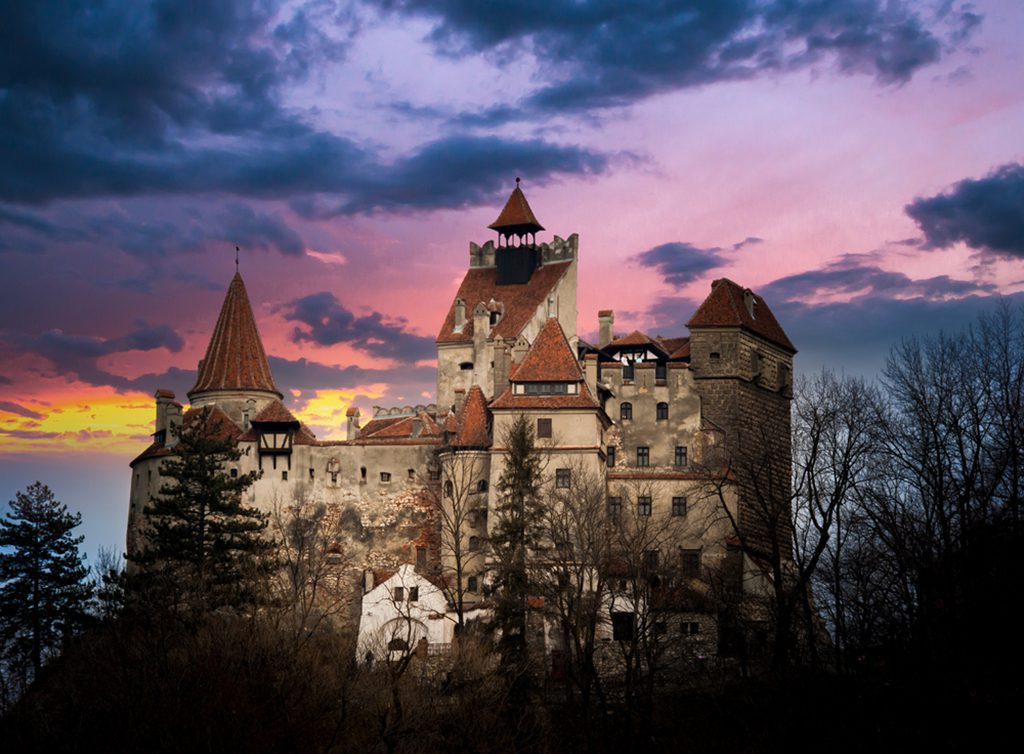In spite of its negative reputation, Romania remains a fantastic travel destination. There are plenty of walled churches and castles to see, but there is also a beautiful landscape to explore, with amazing medieval towns and monasteries juxtaposed with ultra-modern cities and towering mountains.
Placed on the Balkan Peninsula, Romania is surrounded by Bulgaria, Serbia, Hungary, Ukraine, and Moldova, making it a hub for travel between Central, Eastern, and Southeastern Europe. The country’s southern boundary is formed by the winding Danube River as it makes its way to the Black Sea from the southern end of the country, where the harsh Carpathians and other mountain ranges dominate. The majority of the territory is made up of undulating hills, virgin forests, and vast plains; the shoreline is rather small in comparison.
Some of the most visited towns in Romania include the old towns of Brasov, Sibiu, and Sighisoara, all of which are scattered across the country’s picturesque landscape. In addition to the restored historic centers and bustling market squares, visitors can enjoy world-class museums and breathtaking natural beauty.
Bucharest, the capital and biggest city of Romania, is often overlooked despite its beautiful historic core, megalomanic monuments, and exciting nightlife. The city of Cluj-Napoca, known as “the heart of Transylvania,” and the nearby Black Sea beaches make Constanta, located on the coast, a popular tourist destination.
Many visitors utilize the former as a jumping-off point to explore the area, in addition to taking in its fascinating art, architecture, and culture. The interesting painted monasteries of Bucovina and the spectacular castles of Bran, Corvin, and Peles are just a few of the many stunning medieval monuments that dot Romania’s beautiful hills, forests, and plains.
You would be mistaken if you thought Romania was merely a scary place full of bloodsucking vampires hiding in abandoned castles to pounce on unwary visitors. Romania is more than just Count Dracula and the Brukenthal Palace from Bram Stoker’s Dracula novels. The picturesque alpine terrain of Romania is great for skiing in the winter and hiking in the summer, and the country also boasts a fair number of medieval castles. Great quaint villages and beautiful painted churches can be found there. In the Danube Delta, where the river meets the Black Sea, you can find an incredible array of birdlife. A rundown of the best sights in Romania for tourists:
15. Wooden Churches of Maramures
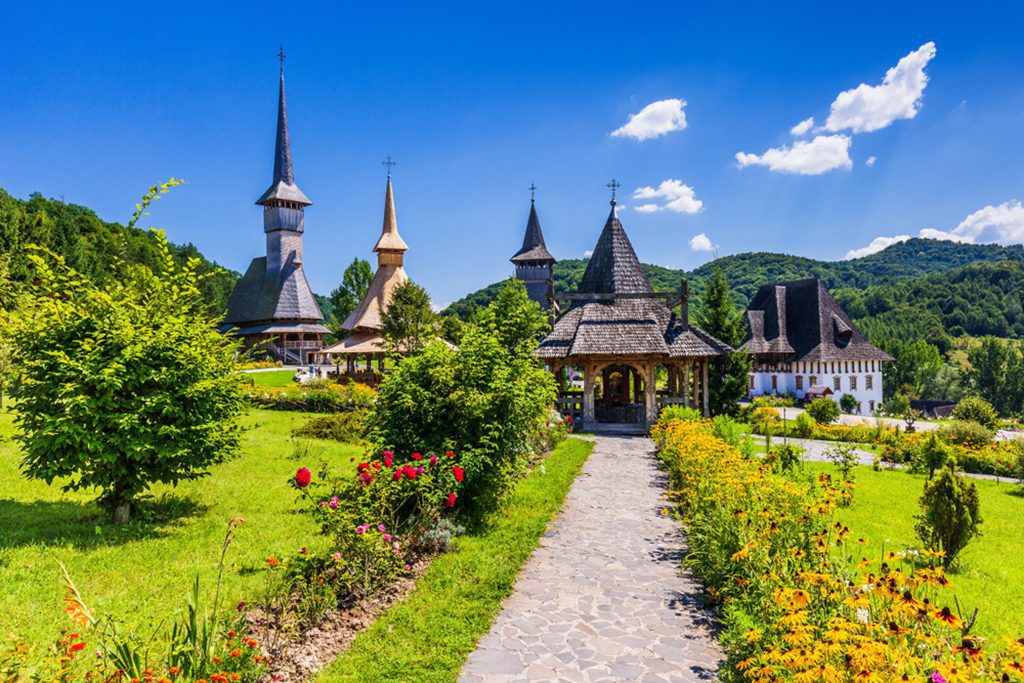
The inhabitants of Maramures chose to build with wood rather than stone since their foreign rulers would not allow them to construct permanent stone churches. Over a two-hundred-year span, they built three hundred wooden churches, of which one hundred are still in use today. Some of these Gothic buildings are Greek Catholic, but the majority are Orthodox. The churches show a high level of carpentry skill with their typically tall and skinny bell towers. They are both simple and sophisticated. Many churches’ interiors have hand-painted murals.
14. Vaser Valley Forestry Railway
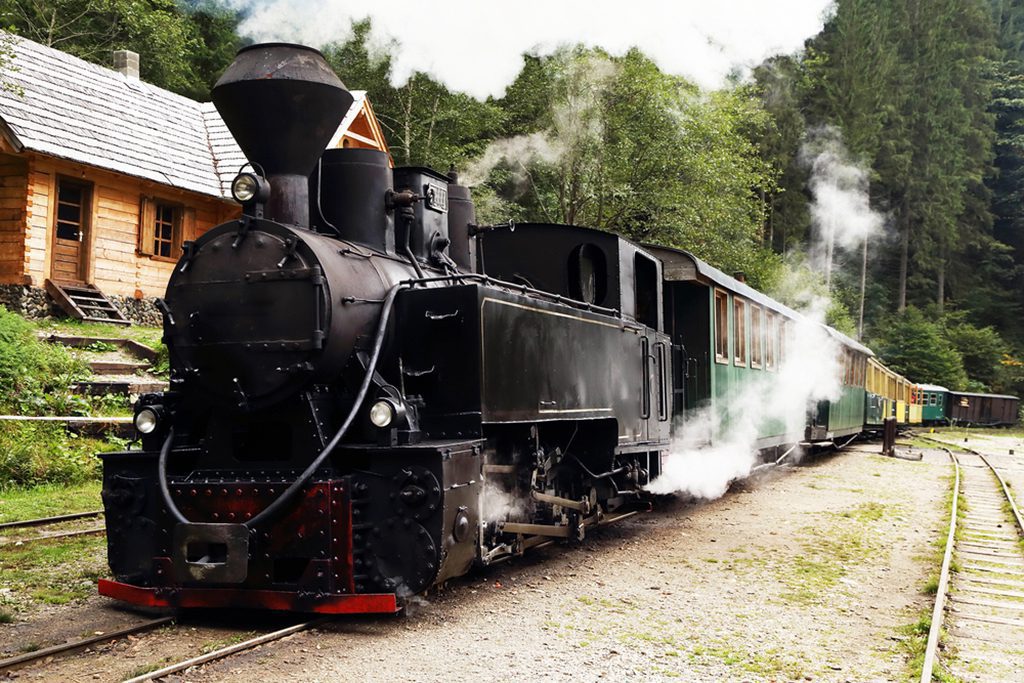
Travel back in time on a steam-powered train through the lush forests of the Carpathian Mountains. The Vaser Valley Forestry Railway has been operating since 1932, initially to transport logs from the forest to the mill along the banks of the Vaser River. Today, it also transports sightseers who enjoy the nostalgia of riding on a narrow-gauge railway through a forest. There will be a two-hour break in Paltin to take in the sights and eat your picnic lunch.
13. Danube Delta

The Danube Delta, the biggest protected river delta in Europe, is located mostly in Romania and is an ideal destination for ecotourists. Binoculars are highly recommended since this location is a birdwatcher’s heaven. Some of the birds that come to nest or spend the winter here come from as far away as Egypt and China. In this area, 300 different species of birds have been seen enjoying the canals bordered with willow trees. Animals like bobcats, foxes, bobwolves, and even a wild boar or two can be seen here and there.
12. Poiana Brasov
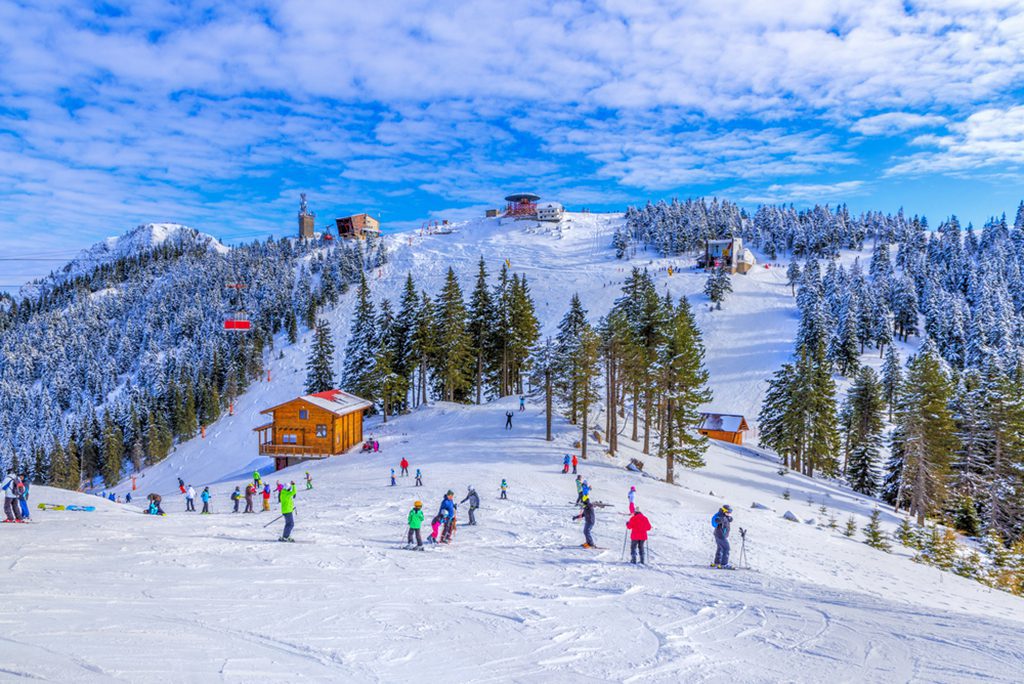
If you’re getting bored with tracking down vampires, Poiana Brasov could be a good option. This is the most well-known ski area in all of Romania, and visitors come from all over Europe to enjoy it. The ski resort in the Carpathian Mountains has seven runs for a total of 25 kilometers (15 miles). Both alpine skiing and ice skating competitions are held at the resort. Warm up with some mulled wine or tuică, a plum-based, pepper-spiced drink, after a day on the slopes.
11. Corvin Castle
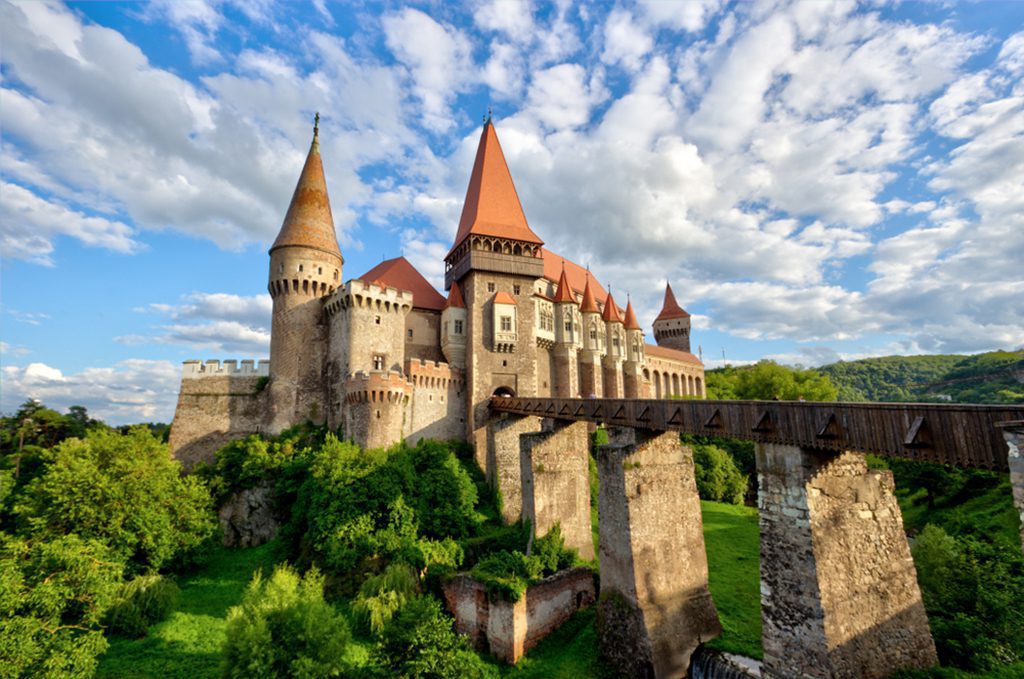
The Gothic castle of Corvin is often regarded as Romania’s best medieval castle. You can also hear it referred to as Hunyad Castle, after the powerful official who commissioned its construction. A wooden bridge honoring St. John of Nepomuk, the patron saint of bridges, leads to the storybook castle of Corvin. The castle’s mascot, a raven with a gold ring, dates back to the 15th century. Check out the torture dungeon and the bear pit while you’re there.
10. Sucevita Monastery
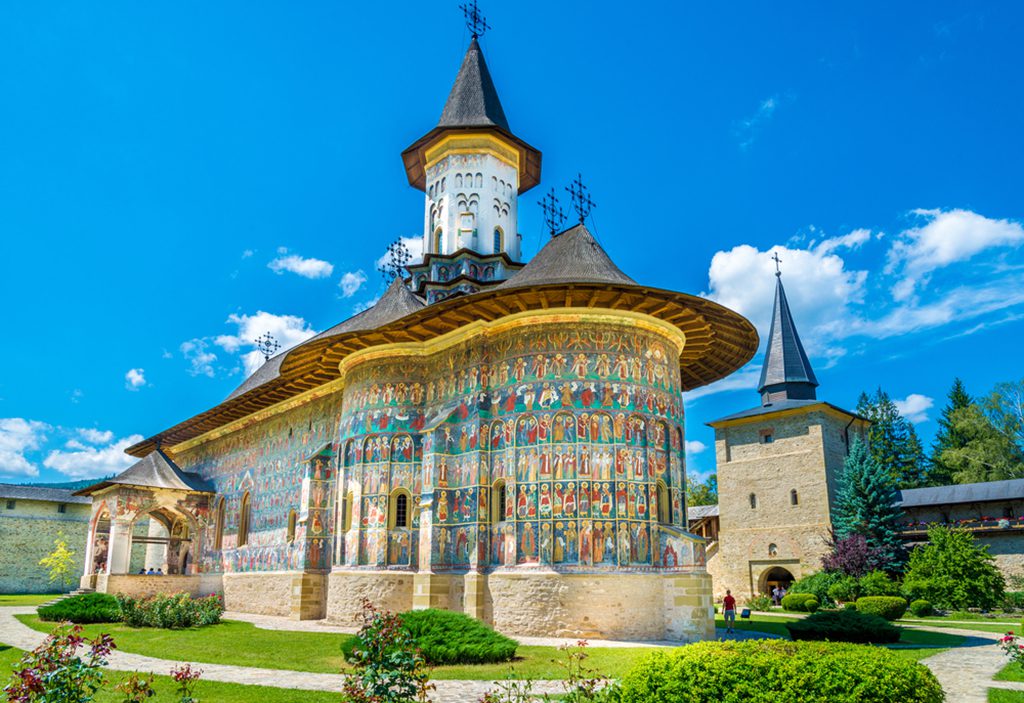
There is little question that the Sucevita Monastery has a unique design. Moldavia’s painted churches and the Gothic and Byzantine styles come together in a breathtaking structure. While the front is cylindrical with a conical roof, the rear is rectangular with a small tower protruding from it. Murals from the early 1600s and silver-thread embroidery adorn the tomb coverings within. The monastery is one of the most significant painted churches in Moldavia, and it can be found in northeastern Romania.
9. Salina Turda
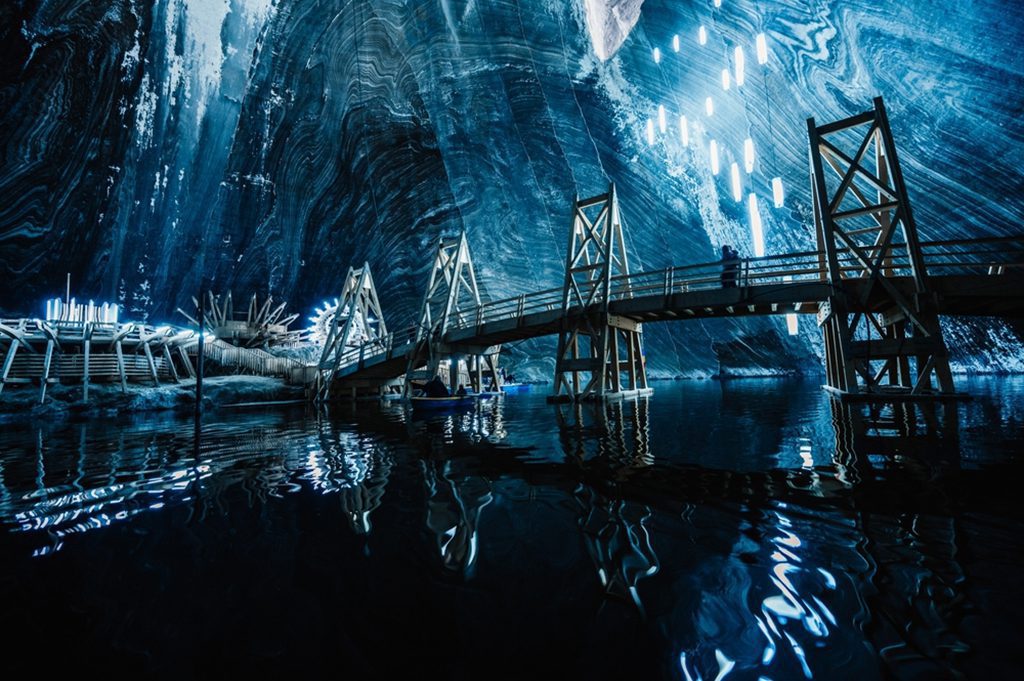
If your day job makes you feel like you’re toiling away in a salt mine, you’ll fit right in at Salina Turda. After excavations ceased in 1932, the salt mine, which had been in operation since the 17th century, served as anything from a cheese storage facility to a bomb bunker during World War II. It’s been renovated into a fantastic science-fiction theme park. Salina Turda, located in Ciuj County, is widely regarded as one of the world’s most fascinating underground destinations. If you want to see this underwater paradise, you’ll have to descend roughly 120 meters (400 feet). A bowling rink, a theater, a lake with prow boats, and even a Ferris wheel await inside.
8. Transylvanian Alps
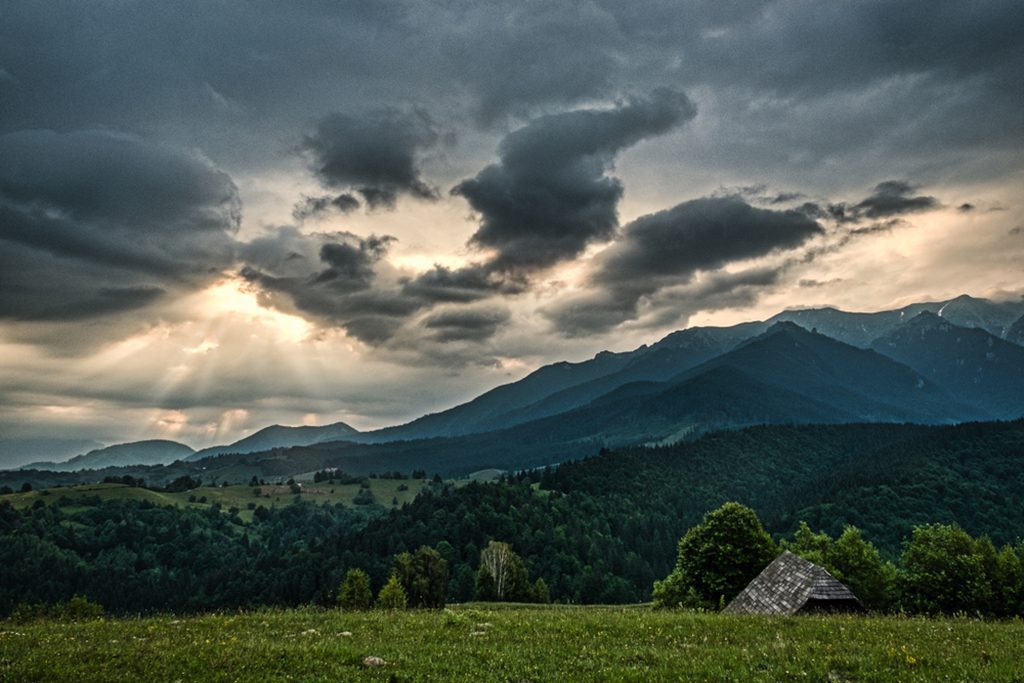
The Transylvanian Alps, or Southern Carpathians, are a mountain range in Transylvania. They are far lower in altitude than the Rockies or the Himalayas, at about 2,000 meters. Mount Moldoveanu, Romania’s tallest peak, stands out at 2,544 meters (8,346 feet) in elevation. You can go hiking or skiing in the winter or hiking in the summer in these rough mountains that are speckled with sheep and covered with fields of wildflowers. Instead of leaving the comfort of your couch, you could go on a search for legendary vampires in your very own mist-covered Gothic castle.
7. Biertan Fortified Church
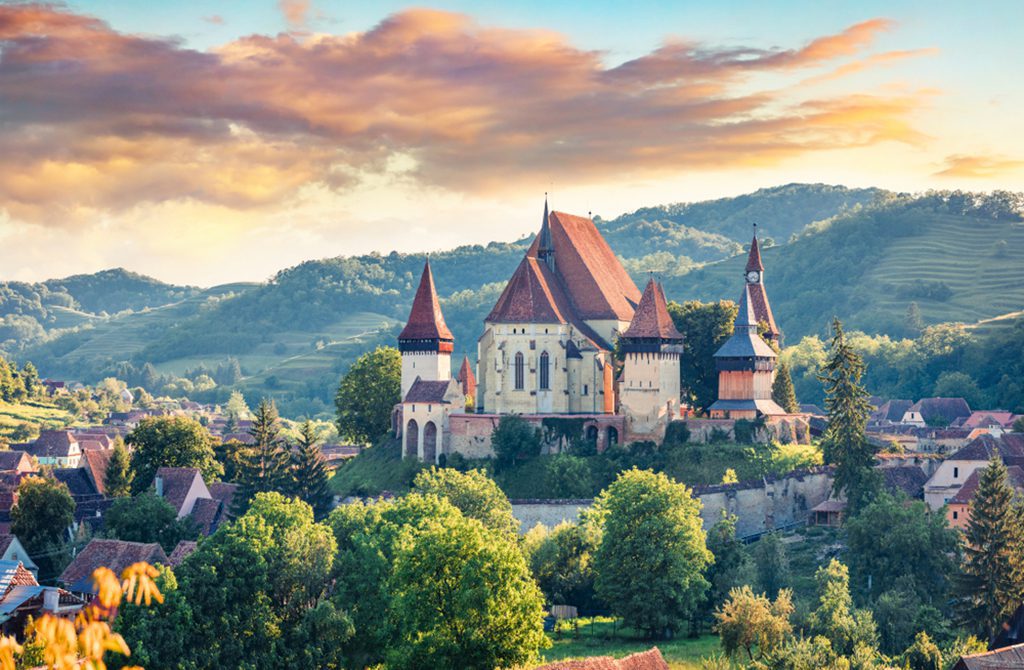
The Biertan Fortified Church, originally a Catholic church constructed when the area was a part of Hungary, towers above the town’s other structures. After the Protestant Reformation, it was reformed into a Lutheran church. When the Ottomans came, the citizens of the town didn’t construct a fortification; they fortified the church. It is one of the biggest fortified churches in Romania and was built in the late Gothic style. Notable features of the church include a tower that was used as a food storage facility during times of siege and another that was used to confine spouses who had filed for divorce.
6. Piata Mare
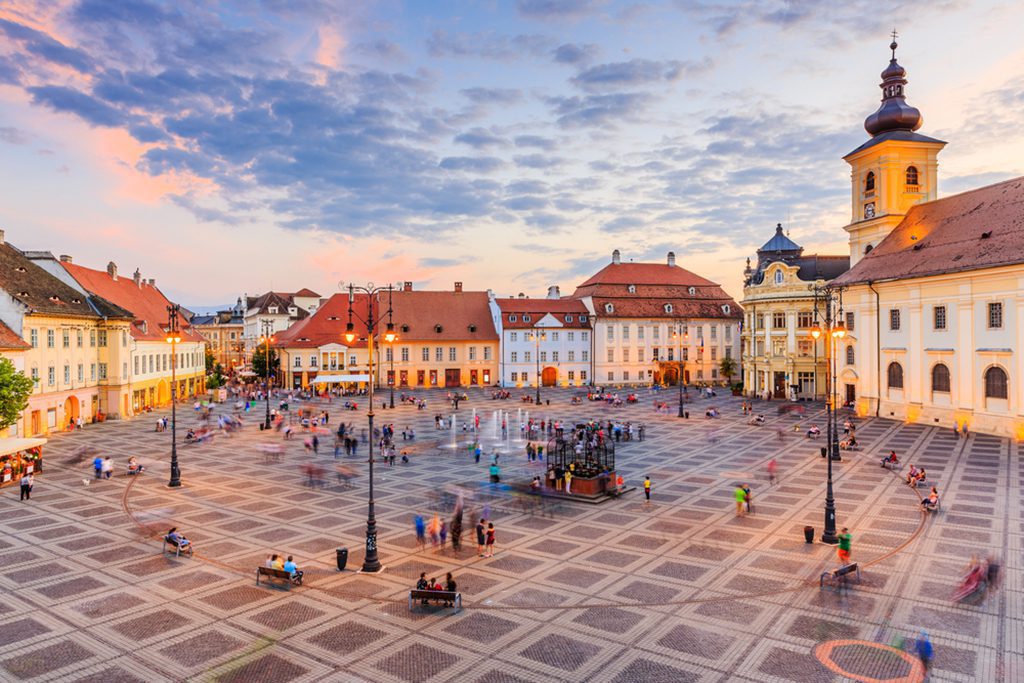
The Piata Mare, also known as “Big Square,” is an important medieval square in the Transylvanian city of Sibiu. In the early 15th century, the square was used as a marketplace for selling grain. This was followed by the construction of the Tailors’ Guild Building some decades later. Then came the houses, the Jesuit church, and Brukenthal Palace. There were festivals and beheadings held in Big Square. The “lunatic’s cage” was a public exhibit of criminals and other troublemakers.
5. Merry Cemetery
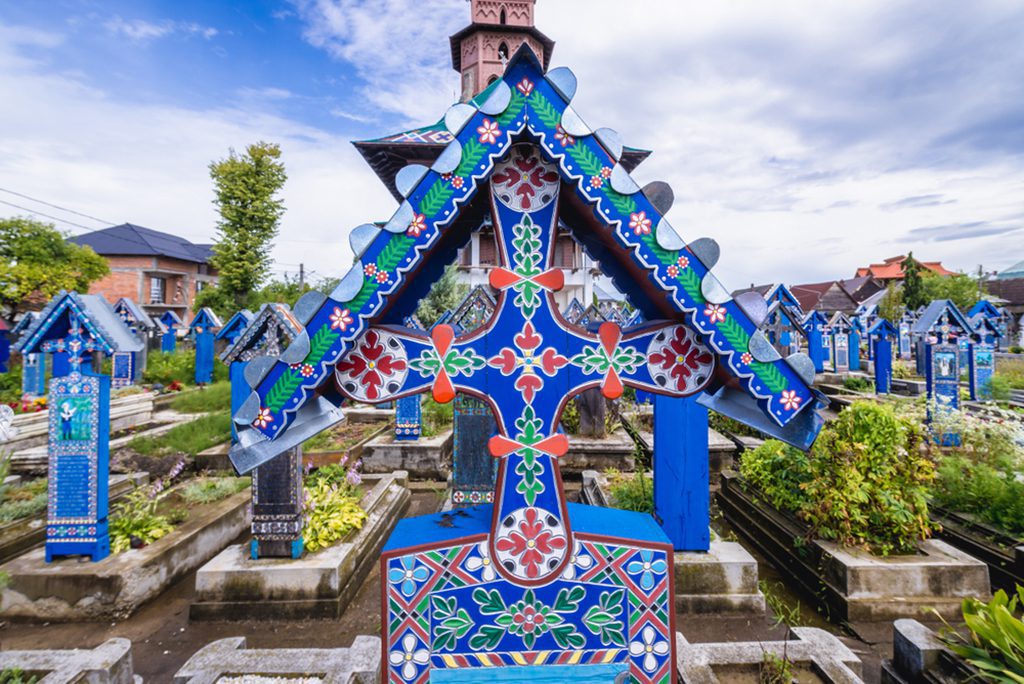
If you’re looking for a standard cemetery, go elsewhere; Merry Cemetery in Sapanta is everything but. The brightly painted tombstones, crosses, and statues honoring the dead make it seem more like a folk art museum. In 1908, a little child started carving crosses, marking the beginning of a vibrant tradition. Sometimes he would even depict the manner of death with a photograph of the dead as they hung on the cross. A custom was established at that point. Everything has a dark blue backdrop, while the other colors represent various aspects of life, death, and fertility.
4. Peles Castle
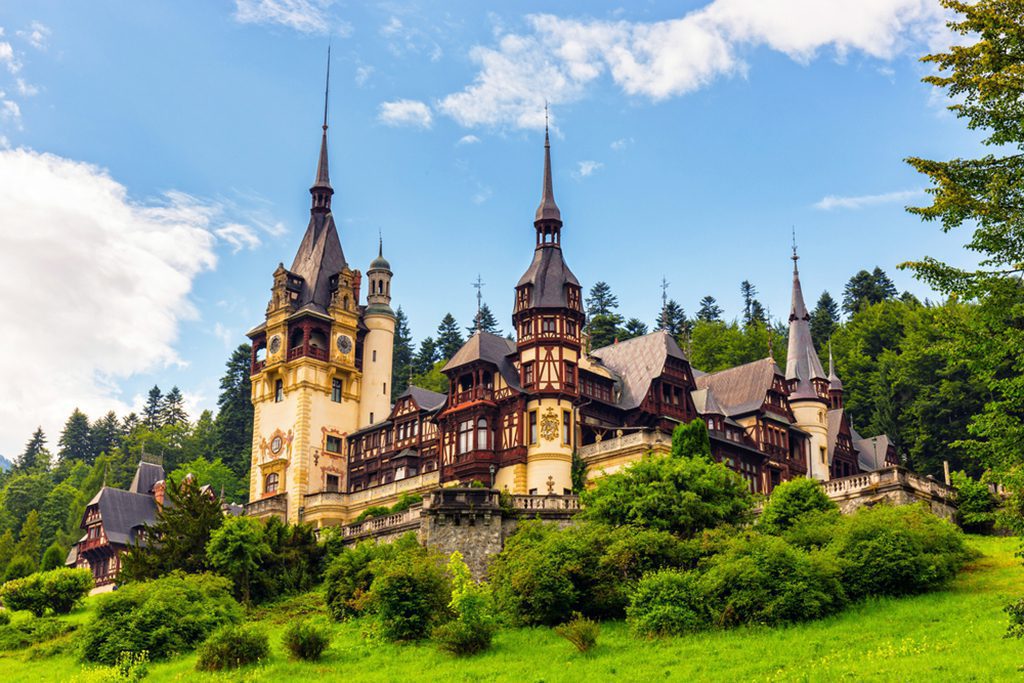
Though it lacks the military significance of other European castles, Peles Castle’s location on a Carpathian hill makes it a sight to see. King Carol I of Romania commissioned this Neo-Renaissance castle for his 1860s vacation. Among Europe’s most impressive castles, its look is straight out of a fairy tale. The king’s interest in military matters is reflected in his 4,000-piece weaponry collection, while the queen’s passion for the arts is reflected in the cinema room’s frescoes. There, Romanians could see the very first film ever broadcast in the country.
3. Palace of Parliament
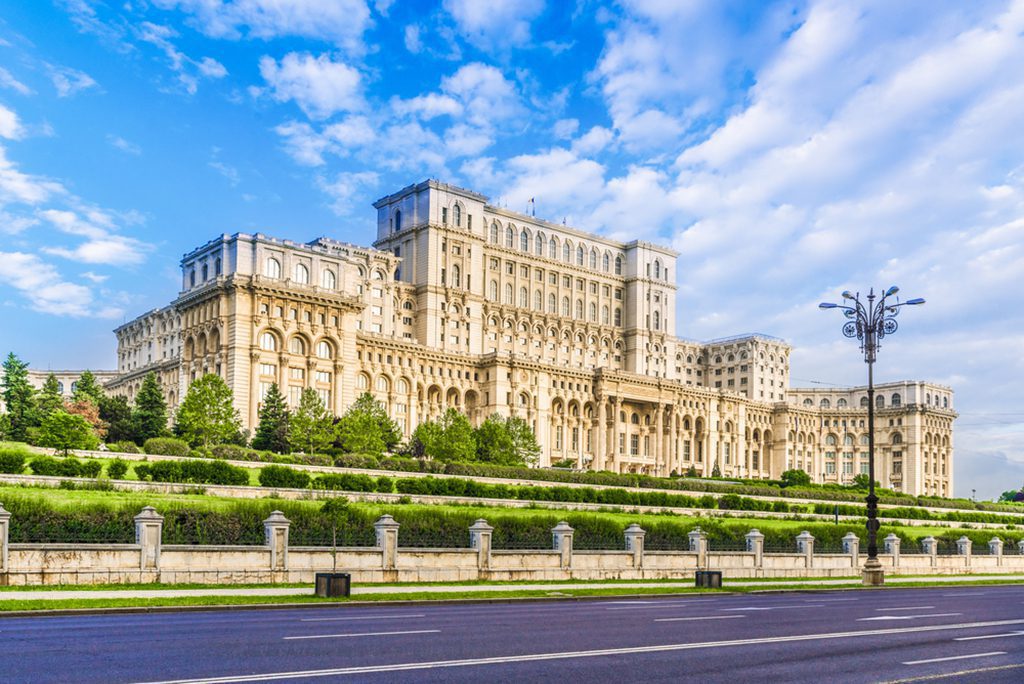
The Palace of Parliament in Bucharest, the country’s capital, is everything but medieval, despite the prevalence of medieval architecture across the country. It’s the biggest administrative building in the world, and it’s completely up-to-date and contemporary. Thirteen years and the efforts of twenty thousand workers were required to complete the structure. It’s a design marvel that required the work of 700 architects and engineers. Since it was constructed by Romania’s reviled despot Nicolae Ceaușescu, the palace is a famous tourist attraction among foreigners but not so much among locals.
2. Sighisoara Historic Center
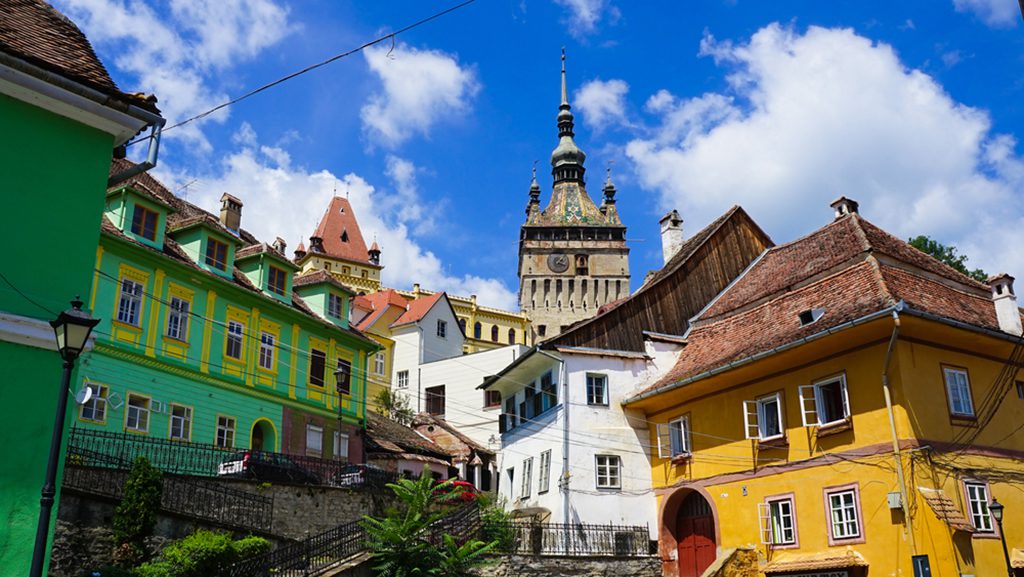
Sighisoara Historic Center will live up to any and all expectations you may have had about what it would be like to visit a medieval town. Old Town Sighisoara is undeniably the pinnacle of medieval architecture. Sighisoara, a superb example of a walled medieval town, was founded by Transylvanian Saxons in the 12th century. You’ll recognize it by its small, winding lanes and brightly painted stone structures. Bram Stoker got the idea for Dracula from Vlad the Impaler, who was born there. During the month of July, the town of Sighisoara hosts a festival honoring its medieval roots.
1. Bran Castle
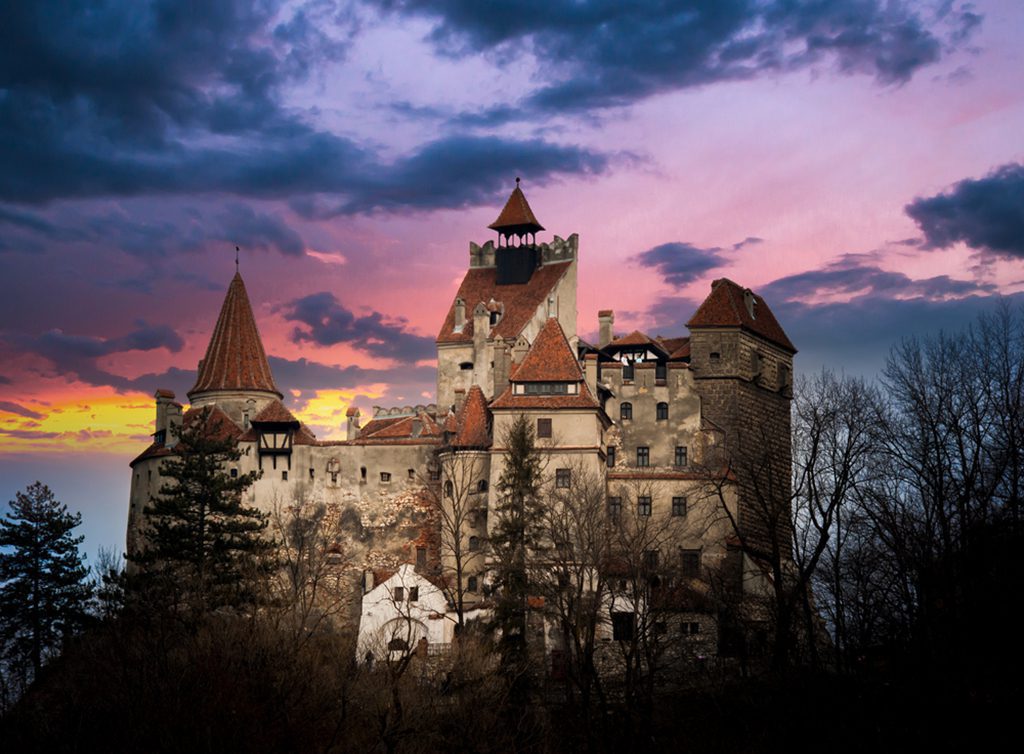
Despite its frequent mention as Dracula’s home, there is no evidence that author Bram Stoker was familiar with the medieval castle of Bran. The castle, a major tourist attraction in Romania, seems like something out of a storybook, perched on a hilltop in the forests outside of Brasov in Transylvania. Medieval in origin, this castle was transformed into a museum by Queen Maria and now displays her extensive collection of art and furniture. There’s also an outdoor museum there that features structures from all around Romania that were formerly owned by peasants.


